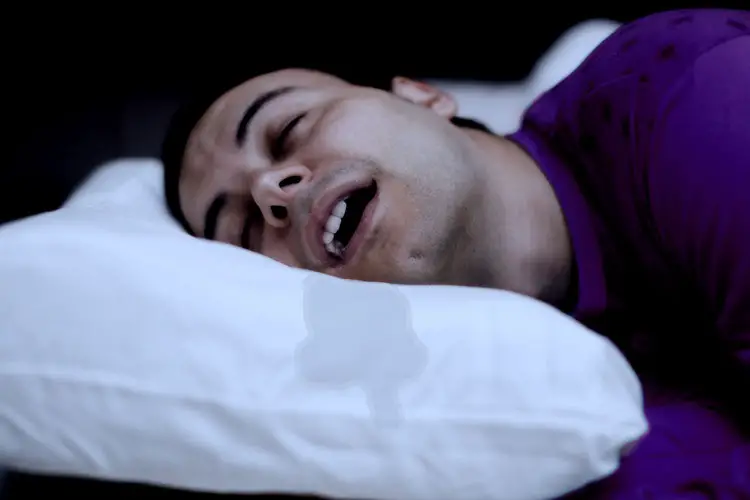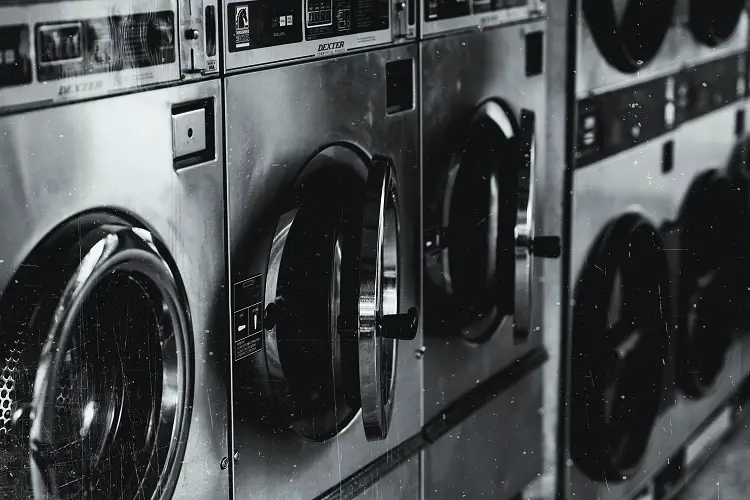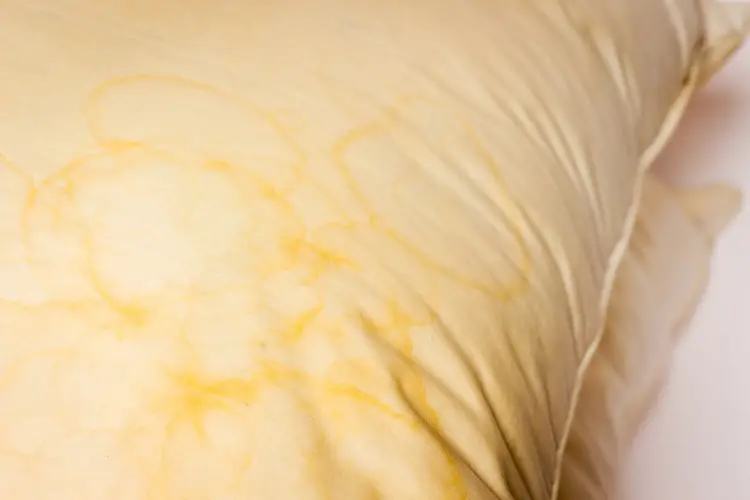Have you been wondering why do pillows turn yellow? To some people, their pillow looks yellow, to others brown. Whatever color you see there is one thing we all can agree on your pillow is no longer the crisp-white color that it was when you bought it.
As expected bed pillows see a lot of use over the weeks, months, and years. Every night, your pillow is there to welcome your head at bedtime, and since there’s a pillowcase on it, you may not even think about how your pillow looks underneath, until its laundry time.
Sadly, that once-white pillow has mysterious and unsightly turn yellow and you begin wondering, where does this yellow-colored stain on your pillow come from? Well, you don’t have to worry because those stains come from simply using the pillow. Read On…
Why Do Pillows Turn Yellow? The Mystery
Bed pillows are one of the most-used objects at home. Every night, you use a pillow or more to cushion your head, leaving behind hair, dead skin, and more, including makeup, sweat, and dirt.
As expected, over time, these things begin to build up, leading to once-pristine pillows turning yellow. The most common things that cause yellow pillow Stains are…
Moisture
As we all know, moisture is everywhere. We are not discussing the moisture and humidity outside because you probably don’t sleep outside.
However, the level of humidity in your home, the temperature you keep your thermostat at while you sleep, and moisture from your hair and perspiration while you sleep, can have a huge impact on the longevity of your pillow causing it to lose its loft and its ability to insulate properly. Your pillows will start to turn yellow.
Hair: When you take your bath in the evening and you don’t completely dry your hair the moisture in your hair can shorten the life of your pillow.
Also, leaving your hair wet before going to sleep will significantly impact the life of your pillow and cause your pillow to yellow prematurely.
Perspiration: One of the reasons you weigh less in the morning than you do in the evening, is that you perspire while you sleep. An average person can lose as much as 1 liter of water overnight and that water has to go somewhere.
During bedtime, some of the liquid is processed internally (why you need to urinate first thing in the morning), and also it sweats into your down comforter, featherbed, or pillows.
Also, Do NOT underestimate the impact a duvet cover and your flat sheet can and will have on the amount of additional, and potentially unwanted warmth, they can add to your bedding environment.

Saliva: Sleep drooling is a surefire way to lead to a discolored pillow. If you look closely at your pillow you will easily be able to identify the dried drool stains.
As disgusting as it sounds, they look like fluffy brown clouds. If you are a chronic drooler then you may find that your entire pillow will be brownish than yellow.
This is because drool quickly seeps through your pillowcase taking with it any dirt and dust that rests on your pillow with it.
Skin And Lotions
The oils from your skin are another enemy that is difficult to overcome but can be managed. These oils are also responsible in large part for the yellowing you may see on the ‘shells’ or ‘ticking’ of your down pillows, feather beds, and down comforters over time.
The oils from your skin take years to impart any yellowing, but the oils from lotions applied after an evening bath do the real damage to the cotton used to make the down shells.
Bathing habits are understandably difficult to change but the lotions and perfumes that are applied sooner rather than later will reach the luxury down feathers and goose down clusters inside the cotton shells.
Beauty Products
Your night time beauty pattern may contribute to your sleep, which can also leave your pillow looking worse for wear. Moisturizers and toners that are not fully absorbed into the skin can mark up your pillow.
And of course, when you get home after a long night of partying, remove your makeup. Do you know how your makeup turns your white bathroom sink into a disaster area? Well, it does the same to your pillow.
Pressing your makeup clad face into your bed pillows while you sleep will cause makeup to sneak past your pillowcase and cause orange marks on your pillow.
Read Also: How To Wash Memory Foam Pillow
Practical Methods On How To Whiten Yellowed Pillows?

Every night, your pillow has always been there to welcome your head at bedtime. Sadly, all good things will surely come to an end. That once-white pillow has mysterious and unsightly turn yellow. To whiten your yellowed pillows, follow these practical methods.
Method 1
By Machine Washing Your Pillows
- Always check care tags before laundering your pillows.
- Spot treat any stains.
- Wash pillows in a mixture of vinegar, washing soda, and detergent.
- Run a second cycle with just hot water.
- Check if the color has improved.
- Place the pillow in a clean dryer with tennis balls.
Read Also: How To Wash Pillows With Baking Soda
Method 2
By Hand Washing Your Pillows
- Always adhere to care tags.
- Spot treat any stains.
- Wash pillows using a mixture of spray vinegar, gentle detergent, bleach, and water to eliminate stains.
- Then add 2 to 3 drops of essential oil when you rinse the pillow for a nice scent. Some good essential oils to try are lavender, rosemary, or rose.
- Hang pillows in the sun to dry.
Method 3
By Maintaining Clean Habits
- Always change pillowcases and bedding once per week.
- Remember to always use linen sprays during washing hours to keep your pillow smelling fresh and clean.
- Machine wash pillows at least twice per year.
- Finally, always go to bed with a clean face and hair.
Note
Do not use harsh chemicals such as bleach and ammonia to wash your pillow. Although both are great whiteners, both are classified as potentially harmful to humans, and should not be inhaled each night as you sleep.
Related Posts:
Conclusion
Remember Just because your pillow is stained does not mean that it needs to be replaced. Use our guide to determine when to replace your pillow. But don’t ditch your old, yellow pillow just yet. You can recycle it into something new.
I hope you find this piece of the article “Why do pillows turn yellow” helpful? Kindly share it with anyone who might be asking a similar question.
Have you noticed your pillow has turned yellow or brown before? How did you solve the problem? Let me know in the comments below.
